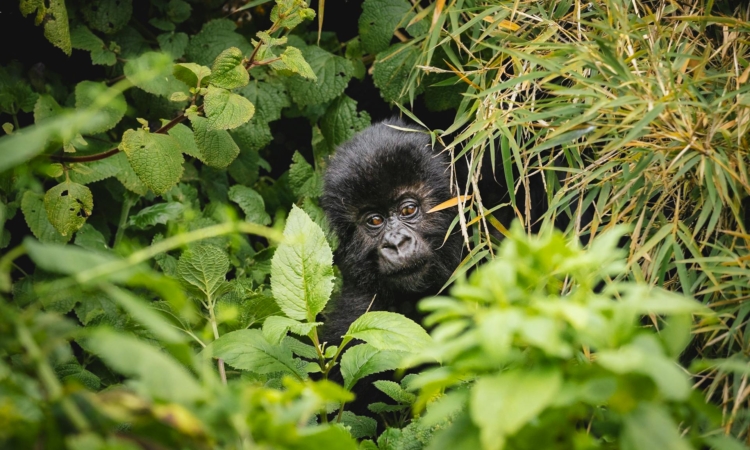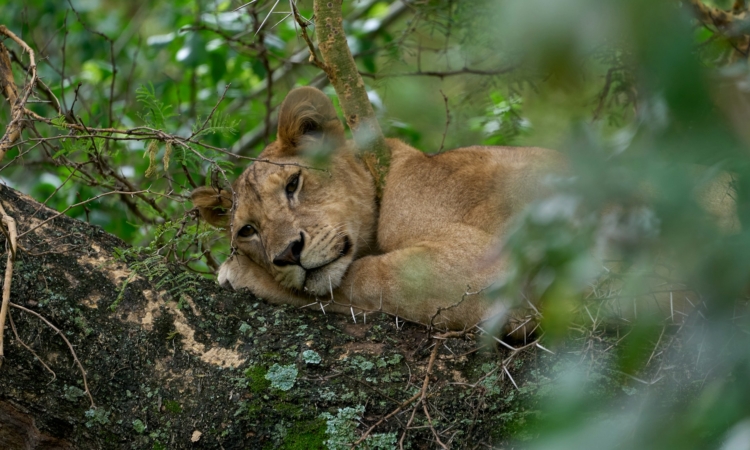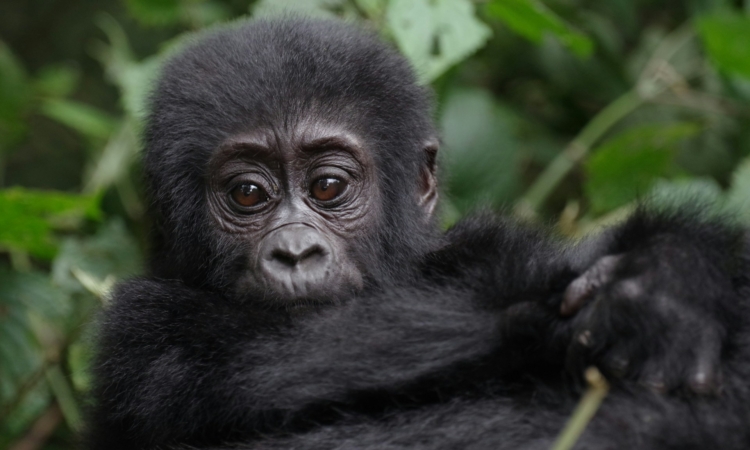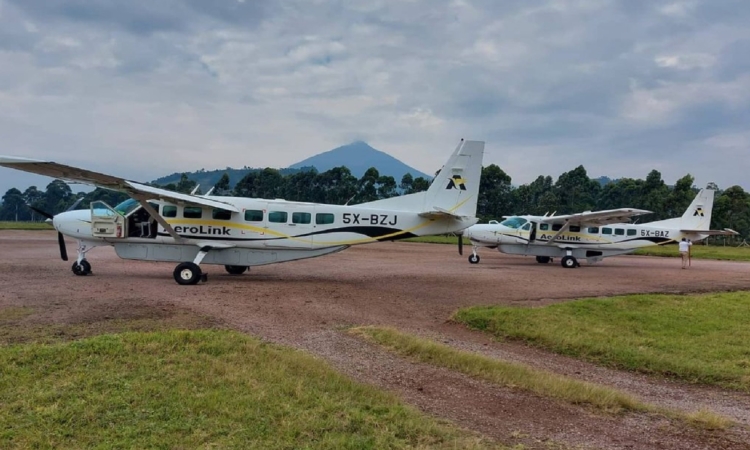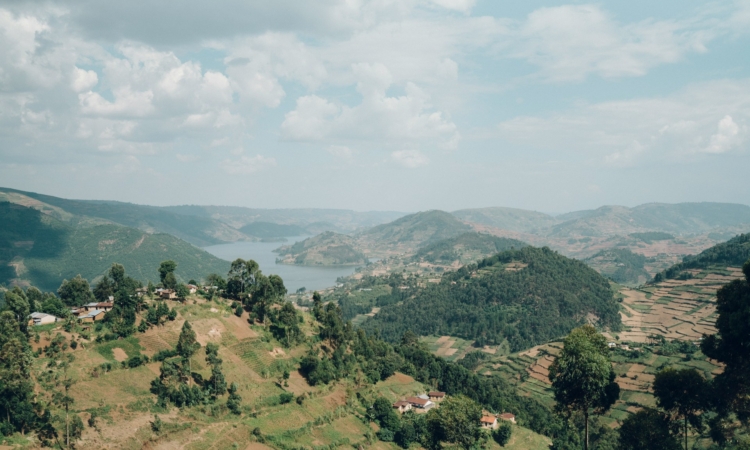Mountain Gorillas – Facts, Habitat & Gorilla Trekking Guide
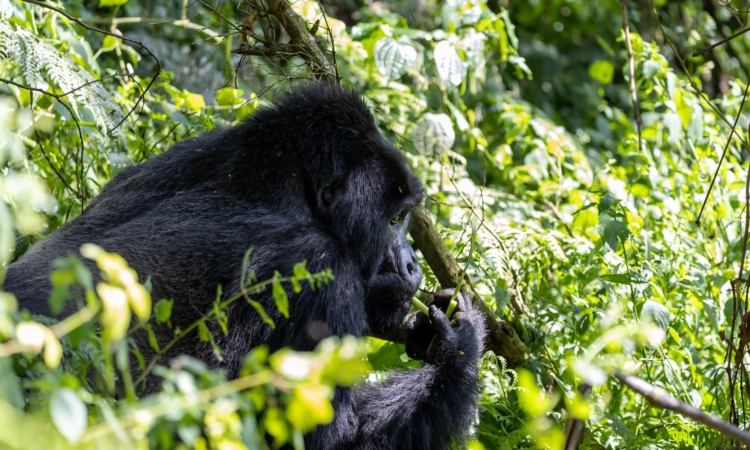
Mountain gorillas are among the most interesting creatures for any nature lover to see on an African safari. Scientifically, they are known as Gorilla beringei beringei, a subspecies of the eastern gorilla (Gorilla beringei). They are listed as endangered on the IUCN Red List. In 2018, their population was around 1,000, and today there are fewer than 1,063 individuals worldwide.
Mountain gorillas are rare and live only in the wild, not in zoos. They are found only in Africa, specifically in Uganda, Rwanda, and the Democratic Republic of Congo.
It is believed that gorillas, like other apes, originated from monkeys in Africa and Arabia about 9 million years ago. Around 2 million years ago, eastern gorillas separated from western gorillas. Today, the eastern gorillas exist in two subspecies: the mountain gorilla and the eastern lowland gorilla.
In 2012, the Uganda Wildlife Authority estimated about 880 mountain gorillas, with around 400 in Bwindi Impenetrable Forest and the rest in the Virunga region, which includes Mgahinga Gorilla National Park, Virunga National Park, and Volcanoes National Park.
Mountain gorillas became known to the western world in 1902 when Captain von Berenge and his friends climbed Mt. Sabyinyo in Rwanda and spotted a gorilla family. He shot two gorillas but managed to recover one, a five-year-old weighing 220 pounds. The remains were sent to Berlin, where it was confirmed to be a gorilla.
Before this, many did not believe gorillas could live in cold, high-elevation areas outside West Africa. After this discovery, more hunters arrived, including Prince Wilhelm of Sweden, who shot 14 gorillas during an expedition in 1920-1921. Later, Belgium and England started gorilla conservation efforts in Congo and Uganda.
In Uganda, visitors were allowed to see mountfain gorillas only after many years. Walter Baumgarten helped set up visits from his Travelers Rest Hotel in Kisoro, which now serves tourists trekking gorillas in Mgahinga Gorilla National Park.
Description of Mountain Gorillas
Mountain gorillas have thicker and longer fur than other gorilla species, helping them survive in cold mountain temperatures. Each gorilla has a unique nose print that helps identify individuals.
Male gorillas are about twice as heavy as females. An adult male is called a silverback because of the grey hair on his back. A silverback can weigh around 195 kg, while females weigh about 100 kg.
Silverbacks are taller and about four times stronger than humans. Eastern lowland gorillas, however, can weigh more, with the heaviest recorded lowland gorilla in Cameroon weighing 267 kg.
Mountain gorillas have dark brown eyes, long arms, and shorter legs. They can stand and walk upright but mostly move by knuckle-walking, using their fingers for support. They are active during the day, spending most of their time eating leaves, stems, fruits, and sometimes insects.
Life Cycle of Mountain Gorillas
Female mountain gorillas become sexually mature between 7 and 8 years old but usually start breeding a few years later. Males mature later and start breeding around 15 years old. The gestation period is about 8.5 months, similar to humans.
They usually give birth to one baby, with twins being rare. Mothers care for their babies for 4 to 6 years, and females typically give birth to 3-4 babies in their lifetime. Mountain gorillas can live up to 40-50 years and live in groups called families or troops.
A typical group has 2-40 members led by a dominant silverback who decides where the group will move and feeds and protects them.
Mountain gorillas can show aggression by throwing vegetation, chest-beating, running sideways, hooting, slapping, and thumping the ground. They have about 25 ways of communicating, including barks and grunts.
Roles of Mountain Gorillas in the Ecosystem
Gorillas play an important role in maintaining the health of the forests they live in. They help disperse seeds throughout the forest, allowing plants to grow.
Their movements create spaces in the forest for sunlight to reach new plants. They also help enrich the soil, which supports plant growth.
Gorillas contribute to the diversity of the forest and help maintain clean air by supporting healthy plant life. When a gorilla dies, it also supports other wildlife by providing food for insects and other scavengers.
Conservation efforts and public awareness have helped protect these unique apes. Gorillas live only in Africa’s equatorial forests, including Bwindi, Mgahinga, Volcanoes, and Virunga National Parks.
Tourists can support gorilla conservation by booking a gorilla trekking tour, donating to conservation projects, and raising awareness about the dangers of poaching and habitat destruction.
Gorilla trekking in Africa begins at 8:00 a.m. and can take 2-8 hours, including one hour spent observing the gorillas. Only eight visitors are allowed to trek each gorilla family per day to protect the gorillas.
Visitors should respect gorillas and the environment by following park guidelines, avoiding littering, and listening to ranger instructions.
Mountain Gorilla Reproduction and Mating
Mountain gorillas reproduce year-round, with females reaching sexual maturity at 10-12 years and males at 11-13 years. Females have a menstrual cycle of 28-33 days and typically give birth every 2-5 years. They usually give birth at night, and infants weigh 2-3 kg at birth.
Newborn gorillas are cared for closely, sitting upright at 3 months, starting to walk at 6 months, and riding on their mothers’ backs for some time. By one year, they move a few meters away from their mothers, and by two years, they can move further but still return to their mothers.
Mountain gorillas are polygamous, with the dominant silverback having access to all the females in the group. Females sometimes initiate mating by maintaining eye contact or approaching the silverback.
A male gorilla may father 20 offspring in his lifetime, while females typically have 3-6 babies. The slow reproduction rate contributes to their endangered status.
Mountain gorillas live in Uganda, Rwanda, and the D.R. Congo in four national parks: Bwindi, Mgahinga, Volcanoes, and Virunga. Gorilla groups usually have 5-30 members, including the dominant silverback, females, younger males, and infants.
Gorilla trekking is one of Africa’s most expensive tourist activities, but it offers a memorable experience. Visitors get 60 minutes to observe and photograph the gorillas after finding them. Gorilla permit prices vary: $400 in Congo, $800 in Uganda, and $1,500 in Rwanda.
Gorilla Tour Booking Form
If you'd like to customize a tour and add more days or destinations below, contact us directly through our main contact page by clicking the button below.

